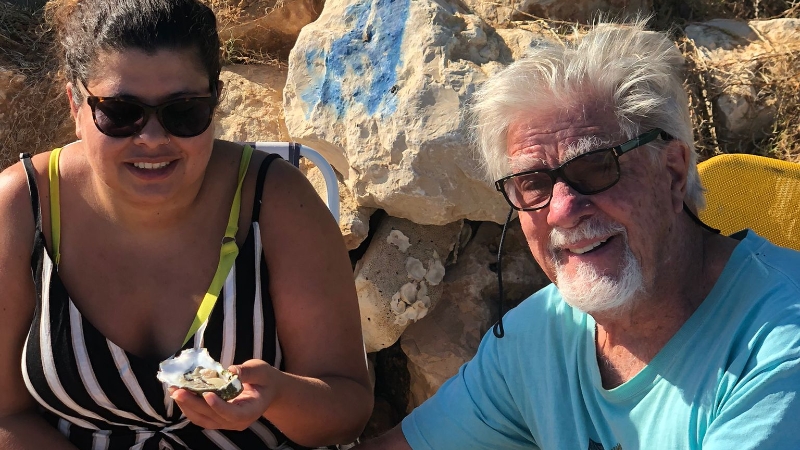By Julian Putley
On a sunny day at the beginning of August, my wife, daughter and I decided to explore the Algarve coast between Meia Praia and Praia de Alvor. Our goal was to take a look at the estuary encompassing the wetlands. It’s a kiteboarding Mecca, a water bird habitat and, as we soon discovered, a shellfish haven.
On the N125 road from Lagos, we turned right toward the coast just after Odiáxere and soon got lost. The golf resort of Palmares should be avoided and the signs to Estra do Vale de Lama followed until there is a crossing to traverse the railway line and onto the dirt road that parallels the shore. We saw a patch of sandy beach and parked the car. Right there, was a small oyster farm and the ladies immediately made enquiries. Result: a kilo of oysters, a shucking knife and a couple of lemons – for 5€. We set up the deckchairs, opened up the chilled bottle of white wine and started shucking. Some kiteboarders who were passing by commented that we were living the life of Riley and we couldn’t really deny it.
Oysters are one of the wonderful natural foods that thrive in Portugal, especially in the Algarve. There are many rivers that terminate in the Algarve’s low-lying wetlands and these estuaries provide a perfect habitat for this popular shellfish. Oyster farming and harvesting is becoming an increasingly busy and fruitful coastal industry in Portugal. Along with clams, mussels, shrimps and fish, the oyster is a valuable addition to the many popular culinary seafood stews like cataplana, a firm favourite in Algarve restaurants.
The cultivation of oysters is a time-consuming operation and there are certain requirements necessary to assure success. Oysters naturally grow in estuarine waters where the brackish waters of sea and river are found. The temperature and salinity of the water is monitored to ascertain the spawning period – the time to maturation can take up to three years. Many growers will buy seed oysters of perhaps 3 mm and then place them in cages or racks. Others may spread them over muddy areas and harvest them using the old-fashioned method of dredging or raking.

In the area we visited at the Ria de Odiáxere/Alvor estuary the tidal flow of fresh, clean seawater was clearly visible, very important for successful cultivation. At low tide, oyster racks could be seen and several oyster cultivation operations existed nearby. However, the primary centre for oyster farming in the Algarve is the estuary of the Ria Formosa and the outlying islands of Culatra, Farol, Armona and Deserta. Boat trips to the islands from Olhão are available and September, October and November are perfect months for this excursion. Several trips include oyster tasting accompanied by a cool glass of white wine and Portugal is home to the light and bubbly vinho verde – perfect! The foodie tradition says that oysters should only be eaten during those months with the letter ‘r’ in them. Perhaps for the preservation of the species or perhaps for the pure, clean and fresh flavour during those months.
There is something almost surreal about oysters. They are a high-fashion food and can command very high prices in top hotels and restaurants. The fact that they can produce pearls adds to the mystery. Then there is the much-talked-about quality of oysters being an aphrodisiac – a fact backed by scientific studies which confirm that oysters have unique amino acids which stimulate sexual desire in both men and women. All of this before we even consider the delicate flavour and texture of the raw oyster or the wonderfully cooked dishes created by the chefs of the Algarve.
Oyster recipes to try are oyster soup, oyster stew and stuffed oysters. However, real oyster enthusiasts may cry out at this bastardisation of one of the world’s great delicacies.













